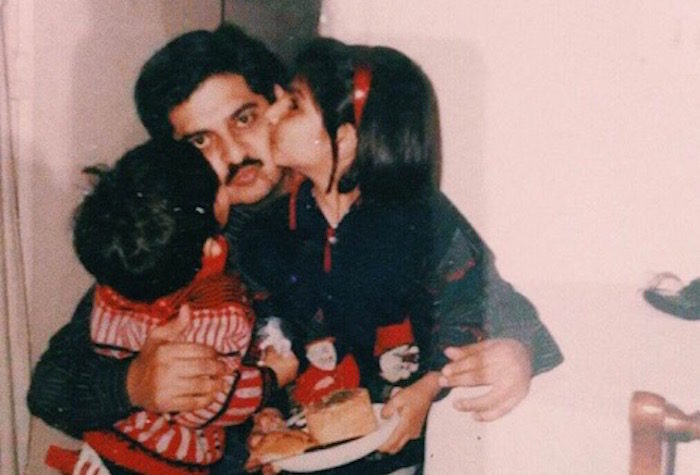Although I’ve lived in three continents of the world during my short lifetime, my home country of India holds the biggest (and truest) part of me. I was born in the capital of New Delhi, where I grew up speaking Hindi and English in my household – both of which are India’s official languages.

I was lucky to have learned Hindi. As a main language, Hindi written in a Devanagari script dominates in India, especially in the northern region (and is not to be confused with Urdu, which is written using Persian script). Yet, despite it being widely understood in most states, Hindi isn’t the primary language in every Indian household.
In fact, recent outcries reveal that people are fighting to obtain official status for the 22 other regional and classical languages in India as well. Hindi or English usually accompany a third regional language specific to each state, such as Punjabi, Bengali, Telugu, Tamil, etc.
I know what you’re thinking. So many languages in one country? That’s overwhelming! But I find it beautiful. This diversity defines India’ core identity. Though I can’t provide a crash course on all of India’s wonderful regional languages, I can try my hand at Hindi: the language that represents centuries of India’s evolving socio-cultural contexts. Here are five fun words that embody its intimate and abundant qualities:
1. Namaste (नमस्ते)

In America, people love to say “namaste“ to me when they realize I’m Indian. It is so often used by western yoga instructors that the word’s tie to yoga (and thus India) now connotes some kind of exotic and spiritual mindfulness tactic. (In fact, when I tried to find GIFs online to accompany this word all I found were GIFs of white people doing downward-dog).
In reality, namaste is not as spiritual a word back home as it is a common salutation. Usually, you say namaste when saying “hello” or “goodbye” to an elder or relative as a form of respect.
Literally, namaste means, “I bow to you,” and is traditionally spoken with a slight bow and hands pressed together in front of one’s chest. This gesture implies deep respect and acknowledgment of the addressee’s supposed wisdom. Kids all over India are taught (and often forced) to say it to their elders as a sign of good manners.
As someone who mostly obtained a metropolitan upbringing (and didn’t get scolded much), I’m used to simply saying, “Hello, Uncle” or “Hi ma’am” when addressing elders instead of “namaste.” Last time I visited India, my neighbor (who is an elderly man) waved to me across our hallway as he picked up his morning paper. I involuntarily said, “Oh, namaste Uncle Ji.” My mother was shocked. I silently patted myself on the back.
2. Ji (जी)
Speaking of “ji,” this is another word that holds the purpose of implying respect, but in two different ways. It means “yes” in Hindi. Informally, one would say “haan” (literally “yes” by itself), but if you were answering to an elder or relative with a “yes,” then you would reply with a “ji.”
Ji is also a prefix/suffix used at the end of titles or sentences as a sign of respect. You also attach it to titles of kinship when referring to adults, such as “Mummy Ji” (mother), “Chaachi/Maami Ji” (aunt), “Chaacha/Mama Ji” (uncle), etc.
In Hindi class, I was never allowed to answer a question (even if the answer was “yes” or “no”) without attaching a “ji” at the end. I would say “haan ji” (हान जी) — a respectful yes — or “ji nahi” (जी नहीं) — a respectful “no.”
I find this funny, because if we consider the first translation of “ji” to yes, “haan ji” could directly translate to “yes yes” and “ji nahi” could be “yes no”!
3. Variations of the word “you” – aap, tum, tu – (आप, तुम, तू)
In Hindi, we say the word “you” differently based on who we are addressing. It defines social setting in a way you can’t intimately do in America.
When speaking to friends, classmates, or acquaintances in informal settings, we call them “tum” or “tu.” However, when addressing elders or family members we say “aap” as a sign of respect. Calling them “tu” or “tum” would be impolite, and you would probably get scolded.
In that sense, the dynamic I find most interesting is the one between wife and husband. Although most duos (such as my own parents) refer to each other as “aap” out of mutual respect or “tum” out of intimacy, I sometimes find an imbalance.
Often, wives might call husbands “aap” because traditionally, husbands are much older than their wives and are meant to be the decision-makers of the household. Yet, husbands may still address their wives as “tum” in response. While this isn’t always the norm, it demonstrates that the way we address someone in India can determine hierarchy in even the most intimate of relationships.
4. Deewana (दीवाना)
Try typing this word into Google, and you’ll get a list of YouTube videos featuring Bollywood songs.
“Deewana” is the signature Bollywood term for a guy that is crazy in love. So crazy that he is essentially a madman, he’s gaga, he’s loopy, he’s lost his bearings.
I associate this word with “MTV India” and my childhood. I adore the filmy (“filmy,” by the way, is another very Indian word associated with melodramatic Indian cinema) word belted out in songs when a girl refers to her lover as they dance around (in fields, usually), while totally, madly in love. Of course, this is a slightly unrealistic characteristic in my opinion, but Bollywood would be incomplete without it. It’s a special type of over-the top and cheesy signature of love that you just can’t find in English.
5. Jugaad (जुगाड़)
“Jugaad” does not directly translate to English, yet it’s a good one to end on because it’s the one word that best defines India at the moment. It means to find an innovative solution to a problem. It can be a hack, or a work-around, and essentially implies an intelligent fix. It also defines a person who is able to provide this fix.
In India, one hears, “iska kuch jugaad kar do” (make use of this or fix this somehow) or “yeh bada jugaad aadmi hai” (he’s a very innovate man/he’ll find a solution to anything).
Jugaad also refers to low-cost vehicles in the northern region of India that are not government-approved due to the improvisation of mechanics that goes into building them. This further explains the interesting use of the word to us.
The word historically holds certain connotations of working to fix something as inspired by a sense of laziness, especially through the use of cheap or unconventional methods. However, it is now seeing a turnaround and is associated with being resourceful and thinking outside the box. A sense of creative invention surrounds the word in a way that is making it an acceptable technique for international economic and business models.
In that sense, I believe that jugaad is more than just a word — it’s an attitude. It’s India’s attitude!
Correction: “नमस्ते” was misspelled in an earlier version of this article. It has been corrected.



Actually we do have a word in English for jugaard it’s called jury rigging or slang is to macgyver or duct tape solution.
👍
Not Jury Rigging ROFL. That is a crime. You mean Jerry Rigging, which is derisive. The word Jerry in this context refers to the Germans (from WW2 probably) and there is another form of this derisive phrase that uses the “N” word. In business there is a word for this Attitude of India, though on the surface it doesn’t make sense. “Disruptive” “Disrupting”. It means that a new process has been introduced into a context (like a market, or education, or the workplace) that is so effective it is disrupting the outcomes of those in the larger context. example: “The growth of accredited Online Universities is disrupting the allure and attendance of the old brick and mortar Colleges.”
You’re wrong about the language issue. Eight schedule of the constitution gives a scheduled language status to 22 Indian languages, including Hindi (but not English as it is foreign), no one language is given a higher status over another. But you can consider Hindi & English as the de-facto official languages of India as all the work of Federal Legislature, Executive, and Judiciary is conducted in those two languages, which makes sense because one government can’t work in 23 different languages. States on the other hand always have their State language (one of those 22 or some other, as there are other languages apart from those 22 who still don’t have recognition in the Eighth Schedule) as an official language, plus either Hindi or English or both sometimes as an additional official language(s).
There was a time in 60s I believe when the Central Govt. was thinking about making Hindi the national language. This lead to a massive anti-Hindi protests in the South (mainly Tamil Nadu) to the extent that the Southern States wanted to secede from the Indian Union, and that was only calmed off when the Central Govt. dropped the idea. Unity in Diversity is great, but a major problem is that Hindi even though is the most widely spoken and understood language in the country, it’s still only spoken by about only 50% of the country (including L1 & L2 speakers both). Hindi by itself has over 15-20 dialects which can be considerably different amongst themselves. India is as linguistically diverse as the continent of Europe. Imagine the lack of communication across the country. So, this govt. again tried to pick the issue of having one link language across the country & hence asked State governments to promote Hindi in school & govt. offices. This has stoked the issue again in Southern States, especially Tamil Nadu. The thing with Southern states is that their languages belong to a completely different language family, Dravidian, as compared to North Indians who speak Indo-European languages. In fact, Hindi is closer to English/Spanish/French than it is to Tamil or Telugu. Logistically speaking, it would be easier to teach a language that is already spoken by half the country to the other half that don’t speak it. But, ultimately this is an issue of ego & pride. To a Tamil, numerical strength doesn’t matter. Having Hindi as a pan-India language means it’s given a superior or dominant status over Tamil. So people in the South are okay with a foreign language like English being taught to everyone to be used as a link language, but not a native language like Hindi. Teaching English to everyone although would be a lot more difficult as only about 125 million Indians speak it today. North Indian states like Gujarat or Punjab where they speak Gujarati & Punjabi respectively, are not so much against Hindi as the Southern States are.
Nice article….Your are wrong about language issues, but I definitely enjoyed those specific Hindi words you have mention above..
As an Indian I’ve found “Arre” to be the one of the most untranslatable Hindi words.
1.It was directed in the beginning that English be dropped and Hindi to be adopted, ultimate ly English to be sidelined.
2. Protests against Hindi were politically motivated.
Nice article. “Namaste” is written as “नमस्ते” in hindi. Please correct it.
As mentioned above, correct spelling of ‘ Namaste ‘ is ‘ नमस्ते ‘.
Thank you so much Jeevika for this accessible and intuitively written piece , especially for people like me who pick up Hindi words when watching movies , but have puzzled about some of the very words you chose to illuminate.
It is both the subtle and colloquial aspects of language that make the difference between honouring the experiences embedded in native use of a language, and just being able to use a “translated” word .
Thank you!
🙏🙏👍👍
U define all of these things brilliantlly
This article is very interesting! I was born in NY but raised in Puerto Rico. The 1st 3 words you have are similar to what we use it in PR for elderly people or elderly family members to show respect.
Namaste=Bendición, which means ‘blessing’, is like a greeting, you should always say this first and they will respond with ‘Dios te bendiga’ Which means ‘God Bless you’.
Ji=Mande, we use this when an elderly person calls you for a favor and you respond ‘mande’ instead of answering ‘que?’ which means ‘what?’ or saying ‘si?’ which means ‘yes?’, it shows respect in the way you answer back.
Tum or tu = ‘Tu’ (we use the same word!) which means ‘you’ we use it for friends, brothers/sisters as well, for the elderly we use ‘usted’ which shows more respect. (No English word for this one, just ‘you’))
It was passed from generation to generation, but the new generation dont use them often.
Thanks. Stumbled upon this as I searched for a phrase in Sanskrit. Very interesting. I think Spanish is the language of Puerto Rico, the land that I associate with Sugar Cane and Baccardi.
I happened to live in Russia for a few years and that language also has a distinction between Vi (Respectful you) and Ti (Familiar you).
It also has a distinction between Zdrastvooyte (Formal Greeting – Hello) and Preevyet (the informal Hi).
अच्छी जानकारी, मूल्यवान और उत्कृष्ट डिजाइन, अच्छे विचारों और अवधारणाओं के साथ अच्छी चीजें साझा करना, बहुत सारी जानकारी और प्रेरणा, जिनमें से दोनों की आवश्यकता है, इस तरह की उपयोगी जानकारी देने के लिए धन्यवाद